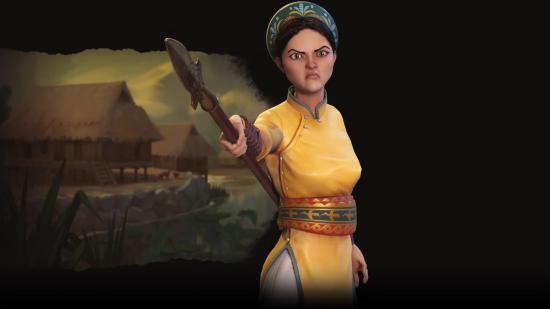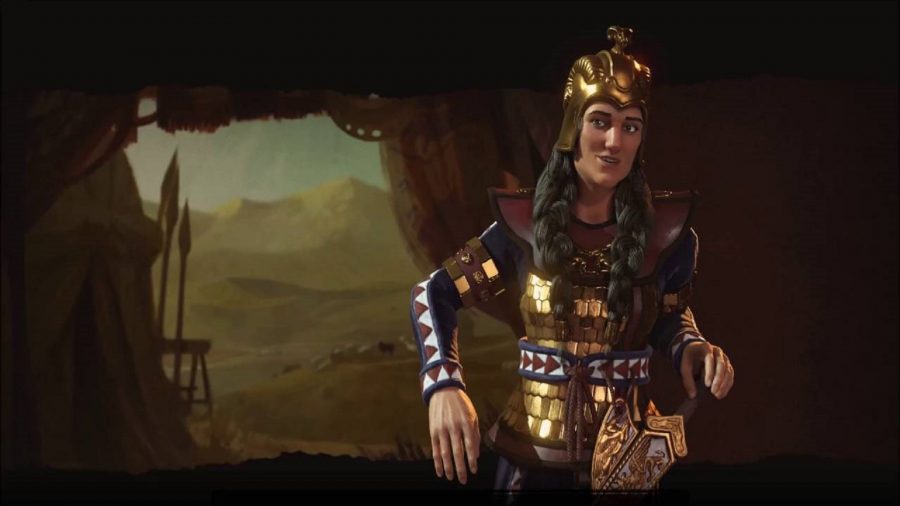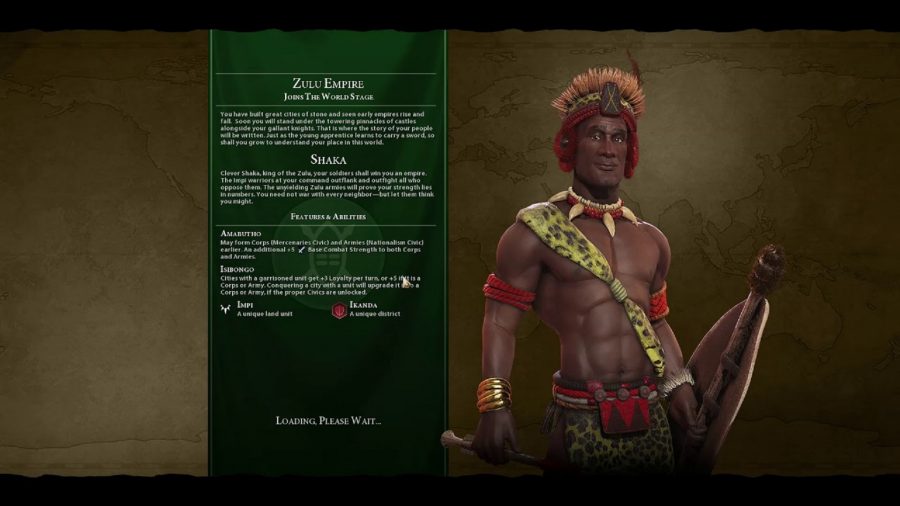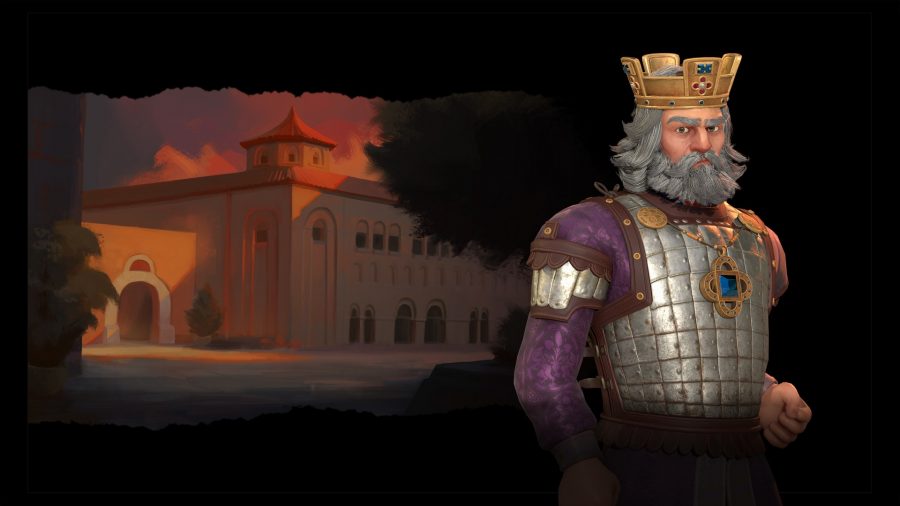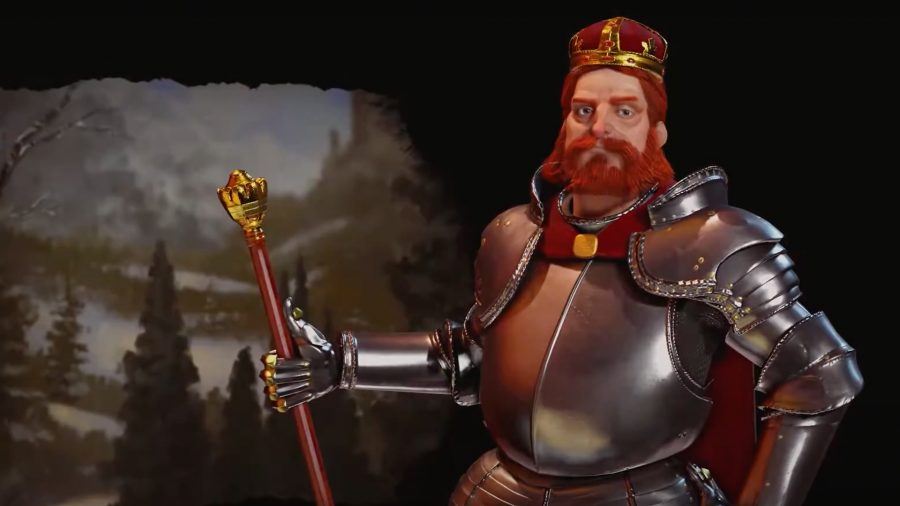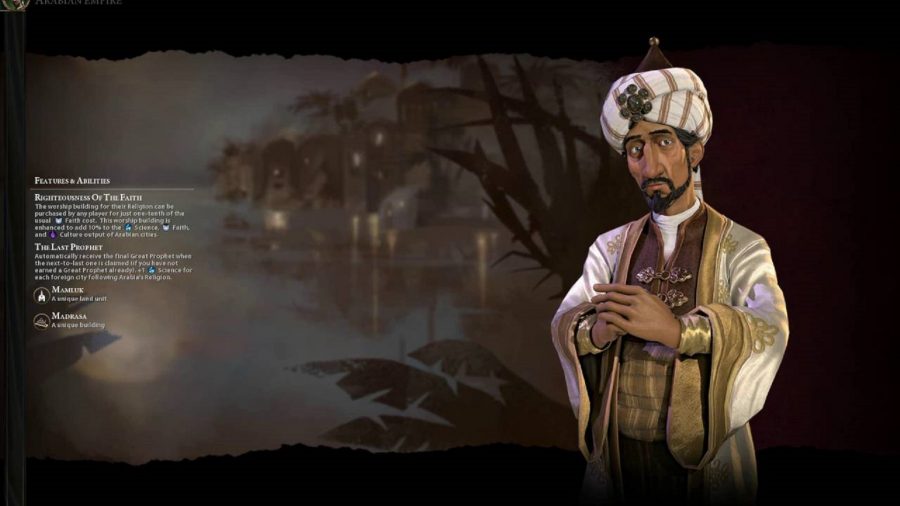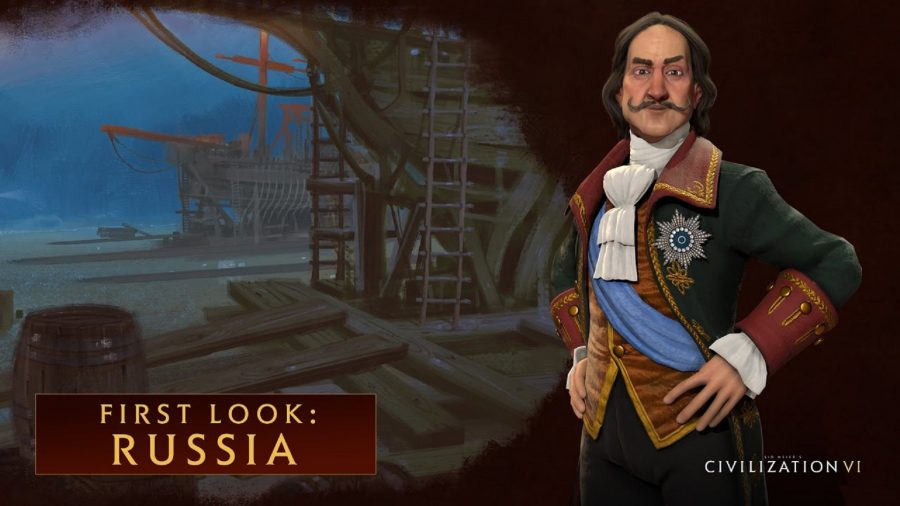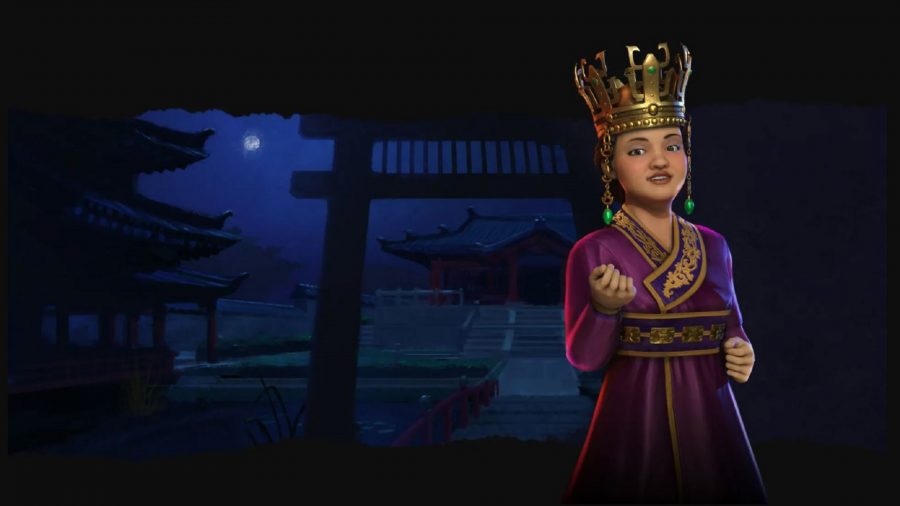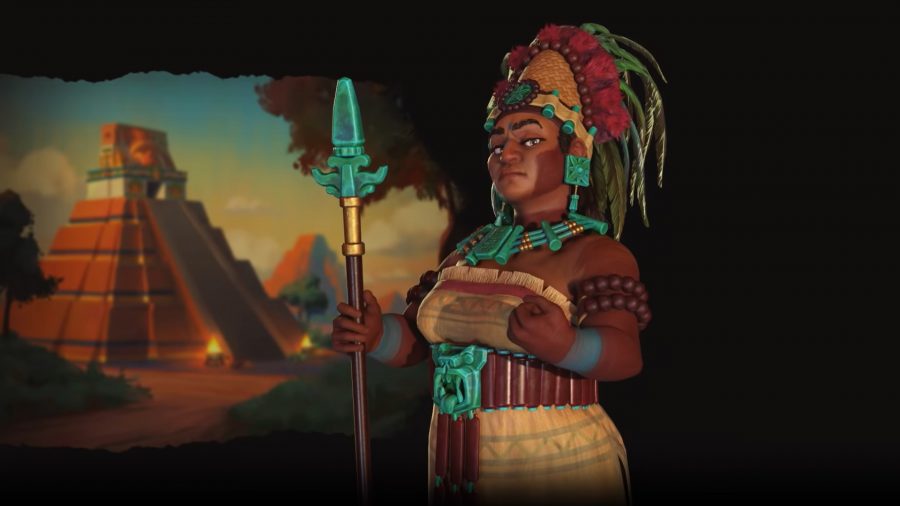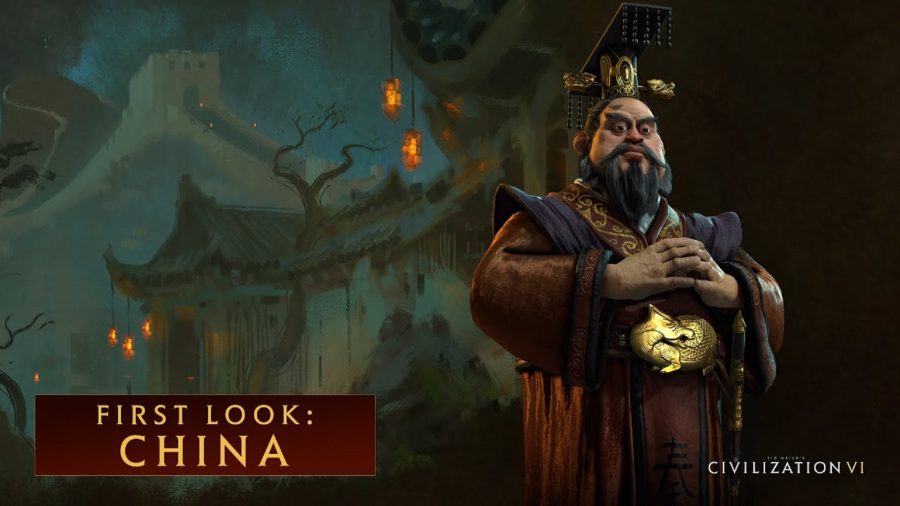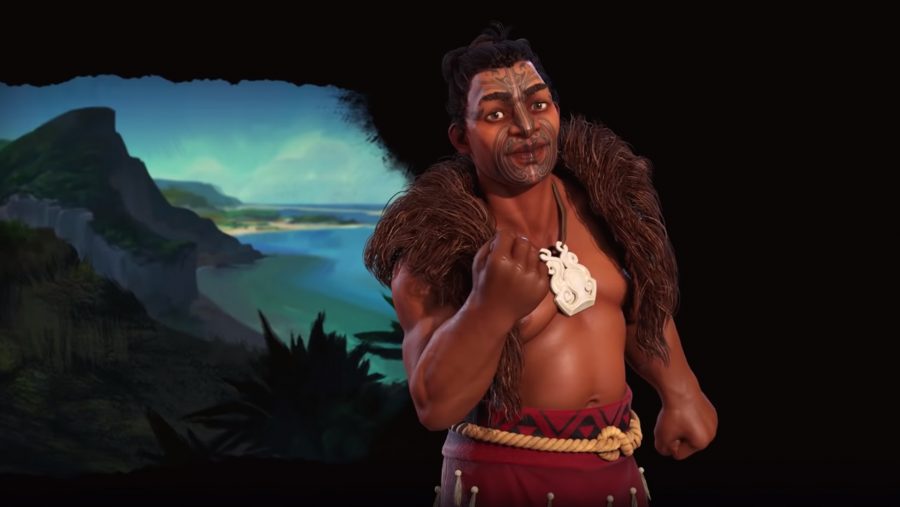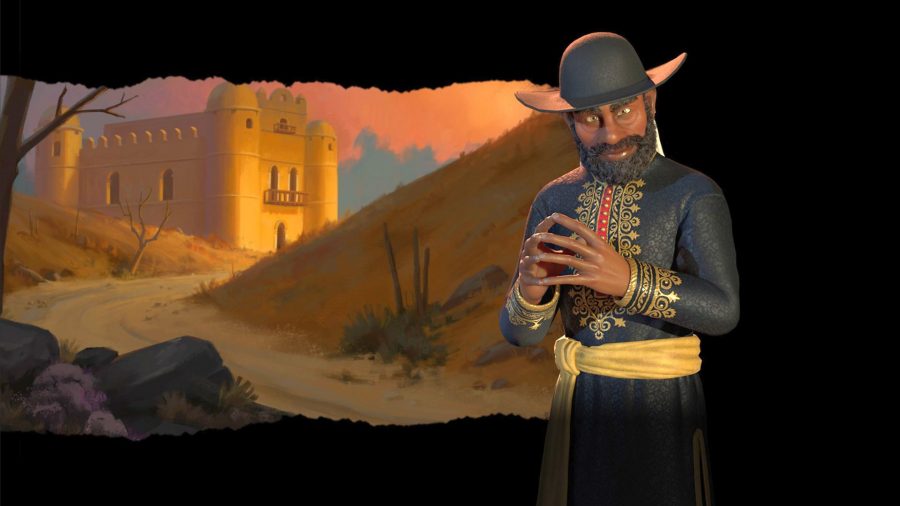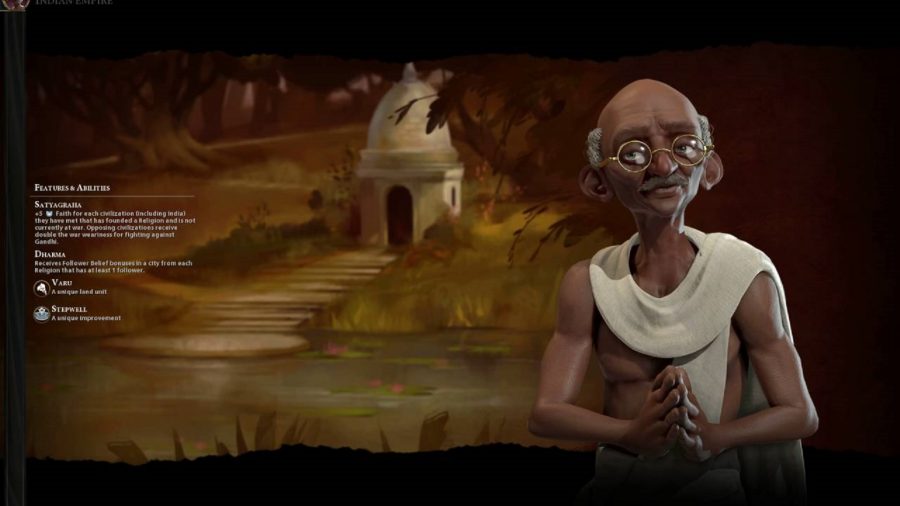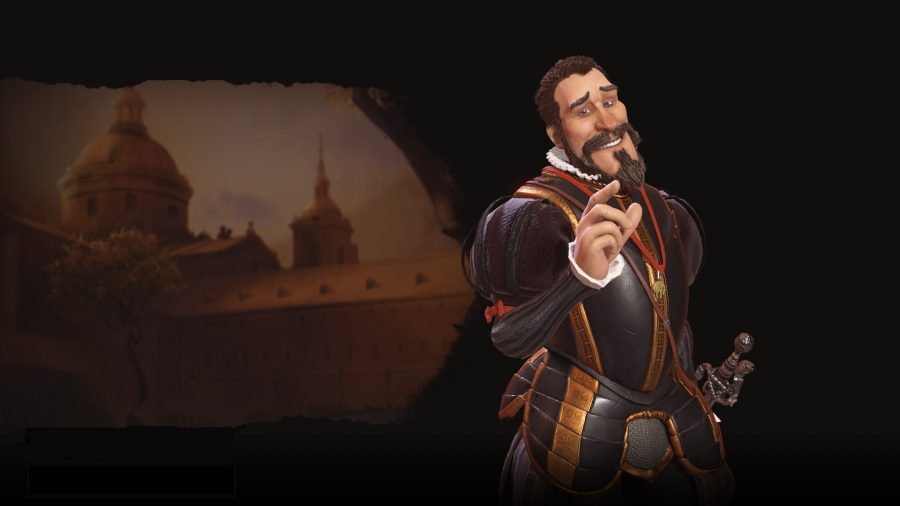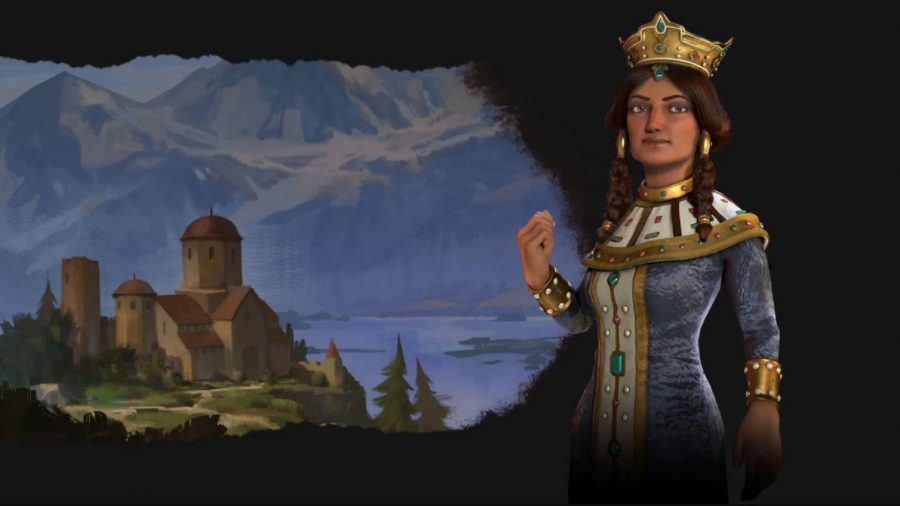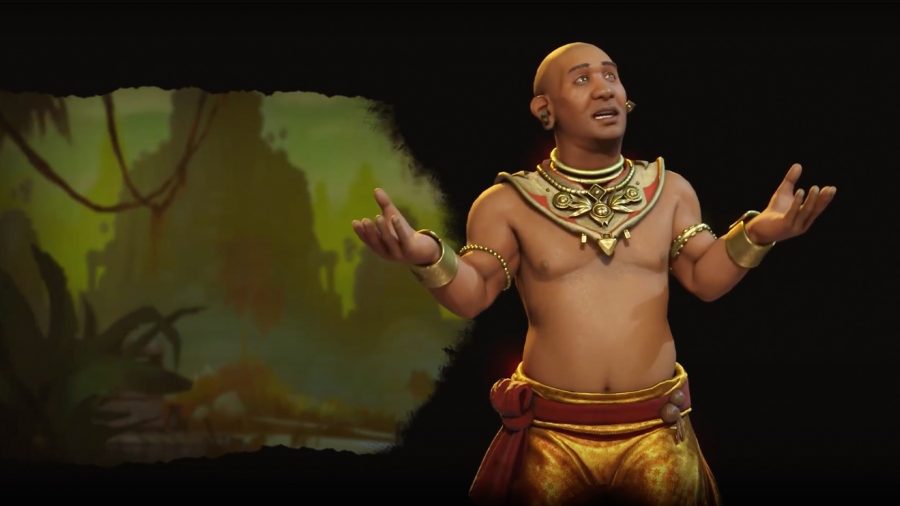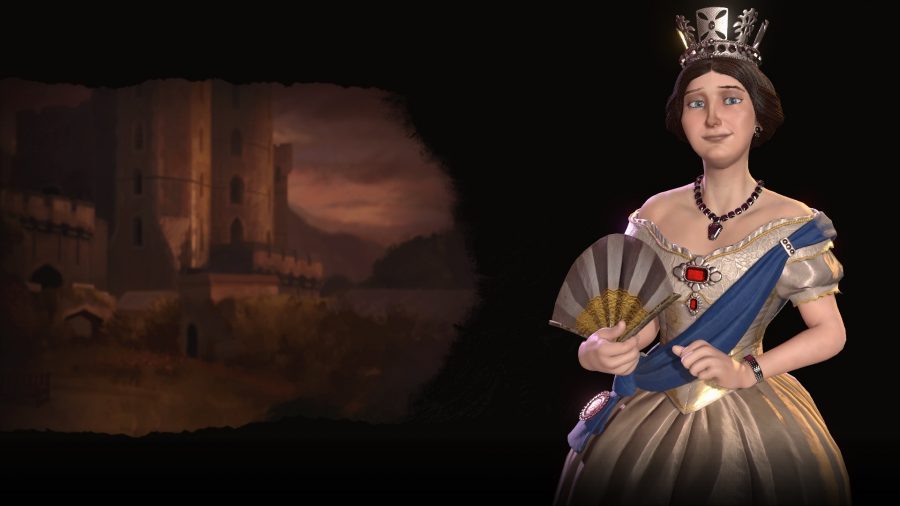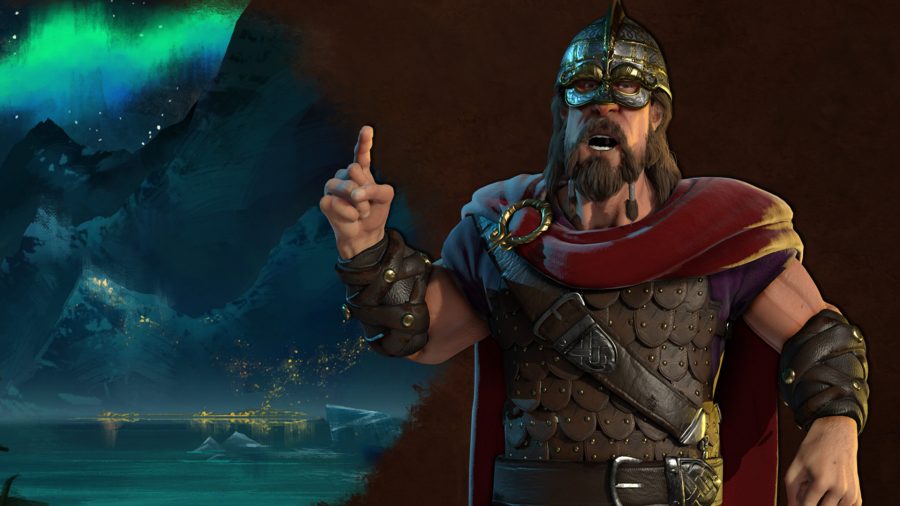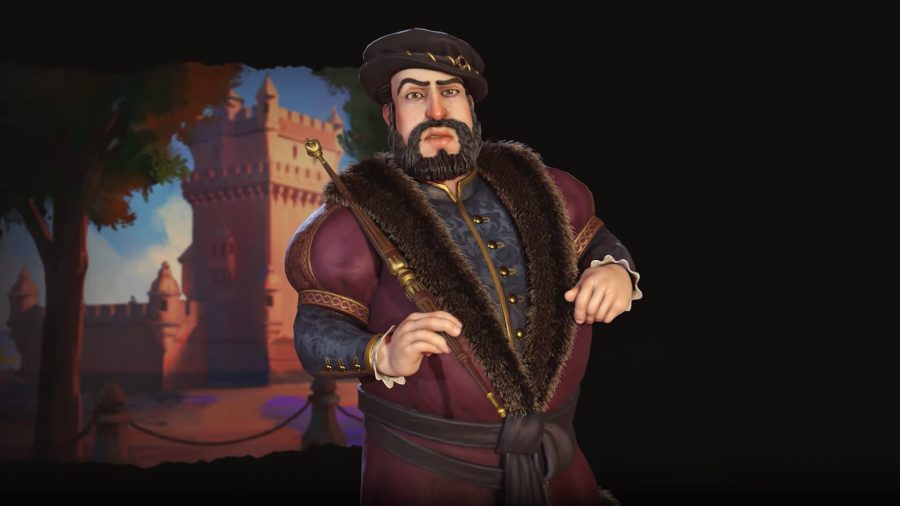What are the best Civ 6 Civs? We’ve put together a guide that looks at which Civilization VI civs are best at which victory type. We don’t list every civilisation, but we’ve showcased some ‘best in style’ picks for various end game strategies. This is based on the same principle as the best Civ 5 civs guide we also have.
Due to the way Civilization VI is designed you no longer have the highly specific, focused civs of the previous game. Most still tend to favour one area over others, but you’ll often find various civs able to flex into a couple of different victory conditions (with one or two exceptions) which allows for some flexibility in how you play them.
This guide includes civilisations from the base game, as well as interesting new additions from the various Civ 6 DLC options that have been released to date, including the New Frontier Pass. These newer civs tend to have more exaggerated abilities targeting specific victory types. This list reflects the changes that Firaxis incorporated with Civilization 6’s April 2021 balance patch, which included modifications to more than half of existing civs. Credit to boesthius for his post-patch tier list video and to peppermint_butler for his post-patch tier list spreadsheet, both of which provided helpful insights.
the best Civ 6 Civlisations
These are the best Civ 6 civs:
- Tomyris of Scythia
- Teddy Roosevelt of America
- Shaka of Zulu
- Basil II of Byzantium
- Frederick Barbarossa of Germany
- Saladin of Arabia
- Peter the Great of Russia
- Seondeok of Korea
- Lady Sky Sky of Maya
- Qin Shi Huang of China
- Wilhelmina of the Netherlands
- Kupe of Māori
- Menelik II of Ethiopia
- Gandhi of India
- Philip II of Spain
- Tamar of Georgia
- Jayavarman III of Khmer
- Wilfrid Laurier of Canada
- Victoria of England
- Harald Hardrada of Norway
- João III of Portugal
Best CIV 6 CIVS – DOMINATION VICTORY
A classic route, Domination sees you conquering the world by strength of arms over your less fortunate civilisations. In Civ 6, you fortunately don’t need to conquer an entire civilisation; you just need to control all of the capitals to score the victory. As military might walks alongside a healthy economy and scientific progress, you also need to pay attention to those instead of just spamming military units.
Tomyris of Scythia
Summary: Early-game rush, land-focused maps
One of the best traditional military factions in the game, Scythia is capable of crushing all other civs in the early to mid game. Their special Saka Horse Archer unit doesn’t require horses to produce and has 4 movement and +1 attack range, making it much more powerful than any contemporary unit. Even better, throughout the game, you get two of each light cavalry unit each time one is trained. During the early game, this allows Scythia to quickly build an unstoppable force of highly skilled cavalry archers, capable of moving fast and striking hard, steamrolling anyone in their way.
Related: The best Civ 6 leaders
The fact that Scythia’s units gain a +5 Combat Strength attack bonus when engaging damaged foes and heal up to 50 bonus points upon defeating them guarantees the enemy forces dwindle at the same time Scythia maintain their own, pressing the advantage home and making it a formidable adversary. The game’s April 2021 balance patch increased food and gold outputs for the civ’s unique tile improvement, the kurgan, which only served to make Scythia even stronger as an early-game civ.
It must be noted that in order to best use this civ’s ability, you need a map with lots of land — the Saka Horse Archers are nearly useless on the sea. Make sure to also act before the mid-game, as modern units quickly close the technological gap between Scythia and everyone else.
Teddy Roosevelt of America (Rough rider)
Summary: Late-game surge, defensive bonus, highly adaptable
When led by Teddy Roosevelt (Rough Rider), America shines as a mid- to late-game civ. However, in order to properly leverage his kit, the player must turtle at the start of a match. Their home defence ability gives them +5 combat strength in their home continent and helps them fend off incoming attacks. Further, regardless of which government the player chooses, the civ’s diplomatic policy cards become wildcard policy cards. This allows the player to carefully craft a policy structure that doesn’t heavily rely on diplomacy.
Once the modern area is reached, America’s unique military units can defeat any contemporary — the Rough Rider land unit gains +10 Combat Strength when fighting on hills and has a lower maintenance cost than other units, while the P-51 Mustang airplane has +2 flight range, gains +5 attack against fighters, and earns 50 percent more experience than the fighter unit it replaces. Make sure to invest in science to be able to field those units ASAP.
Being quite versatile and late-game focused, America does not have many terrain restrictions and is easily one of the most adaptable civilisations in the game. Culture and science victories are also easily achievable.
Shaka of Zulu
Summary: Rise and Fall expansion, mid-game, large armies
The indisputable powerhouse of Civ 6’s Rise and Fall expansion, the Zulu’s natural bonus to combat strength and training speed gives them a massive advantage during wars. The Impi — an anti-cavalry unit that replaces the Pikeman — is faster and cheaper to produce, and they get more flanking and experience bonuses than other units, making them the perfect starting point for a strong military.
After that, it’s all a matter of using the ikanda, which replaces encampment districts, and the Mercenaries/Nationalism civics to get early access to corps and armies, allowing you to stack all those units together into a single steamrolling horde.
If you’re worried about defence, don’t: the Zulu are (foolishly) the only civ in the game that get a +3 loyalty for cities with a garrison, making them resistant to both military and cultural offensives. Plus, Civilization 6’s April 2021 update included a minor buff of +2 gold and +1 science for every building in the ikanda, providing a valuable early-game boost that grows as you develop your cities.
Basil II of Byzantium
Summary: New Frontier Pass, religious-based combat bonuses, powerful mid-game
With the ability to get combat bonuses from converting holy cities to the civ’s own religion, as well as the ability to spread religion quickly by eliminating non-barbarian units, Byzantium is well suited for either a Domination or a Religious victory. The beauty of it is, they don’t even have to choose as both victory conditions are intertwined.
Spreading religion early and often will help see you through to the mid-game, where the Hippodrome unique district will really let this faction shine. This district grants one free heavy cavalry unit when first constructed and with every building constructed thereafter (and hopefully, those units are benefiting from the combat bonuses you’ve earned from Byzantine’s civilisation ability, called Taxis).
Your military might will allow you to ignore parts of the tech tree and focus on production, setting you up for the late game.
Frederick Barbarossa of Germany
Summary: High-production city-state dominator
Germany is a production powerhouse. Led by Barbarossa, the civ starts strong with an extra military policy card, which he keeps throughout the game. Additionally, Barbarossa’s military units have +7 combat strength against city-states. This gives the player a strong incentive to capture city-states to block other civs from earning suzerainty bonuses, allowing him to quickly grow his empire at the same time.
However, the primary reason Barbarossa is so strong is Germany’s Hansa building, which replaces the game’s industrial zone district and takes half the time to build. Though similar to the industrial zone, hansas receive a major adjacency bonus (+2) from commercial hubs in addition to dams, aqueducts and canals, as well as other production bonuses for adjacent luxury, bonus and strategic resources and from other districts.
While this civ requires some planning, playing him properly results in significant gold and production yields, which the player can augment with science, culture or faith.
Best Civ 6 civs – science Victory
Science victories are a staple of the Civ series, always leading to the space race meant to expand civilisation to the stars. Civ 6 has a myriad of ways of accruing science progress.
Saladin of Arabia
Summary: Advanced, Religion-combo, adaptable
Advanced players looking for a less traditional path to a science victory will enjoy Saladin, who has the unique ability to mix technology and religion and achieve either victory. Arabia’s religious buildings boost science, culture and faith by 10%, while their bonus generates one additional unit of science per turn for each city that follows Arabia’s religion.
This unique approach to faith and science is capable of generating an amazing payout, catapulting Arabia in front of its peers. Needless to say, Arabia can pursue a religious victory just as well as they can pursue a scientific one. For the fastest path to a science victory, you can spend some of your faith income on great scientists so you can quickly move through the tech tree with boosts and other bonuses.
Peter the Great of Russia
Summary: Advanced, tundra tiles, trade routes, flexible victory
Russia is a weird civilisation, gaining major variable bonuses from tundra tiles and focusing on expansion. However, their added territory allows them greater flexibility when building districts, while their special ability generates extra +1 science or culture from trade routes to civilisations more advanced than them. Though the April 2021 balance patch nerfed the number of additional tiles he gets per city (he now gets five, down from eight previously), it’s still enough land to ensure he can strategically block opposing civs simply by settling near them and expanding.
In the hands of a skilled player, these bonuses can help boost a science victory quite quickly, and make Russia into a powerhouse. As long as you expand and settle in tundra as much as possible, Russia can achieve any victory condition in the game.
Seondeok of Korea
Summary: Rise & Fall expansion, mid-game, mines, governors, city optimisation
Korea comes back from Civilization V as a scientific civ, though with a less pronounced advantage in Civ 6 than before. Mines give science to adjacent seowon (campus replacement) districts, which already give +4 science on its own (and +2 for each specialist). The only catch is that players can’t build other districts next to the seonwon, or else the seowons will lose their bonuses. Avoid this by surrounding them with mines and farms instead.
Further, established governors in cities provide +3% culture and science for each promotion they have earned, including their first. Players who leverage this carefully can see massive boosts to their science output, especially if they build wonders that provide science yields. This specialization, in conjunction with the Hwacha ranged unit, makes a medium sized mid-game empire Korea’s best chance to get ahead and beat everybody else in the science race.
Lady Six Sky of Maya
Summary: New Frontier Pass, tall empire, farms & plantations buff, strong early game
The Mayans were introduced as part of the New Frontier Pass. With Lady Six Sky at the helm, this civilisation can match even the Koreans in terms of science-generation potential, and can be more dominant militarily in the early game so that you can take out some key rivals (like Korea). Lady Six Sky’s unique ability (non-capital cities within 6 tiles of the capital gain +10% to all yields) means you’re looking to build a tall, compact empire that’s very dependent on geography.
Also, as of April 2021, all Mayan cities settled within six tiles of the capital receive a free builder, meaning you can quickly get to work developing your cities once you’ve settled them.
Related: The best 4X games on PC
The Mayan’s unique district, observatory, represents a cheaper, better campus and you’ll want to focus on expanding on to good farmland to make the most out of the Maya’s buffs. The challenge will come in the Industrial era, as being a small empire means you’re more likely to be lacking in certain strategic resources.
The current thinking is to choose the Ancestral Hall as your Tier 1 Government Building and focus on getting Settlers out to key locations when the time comes, as securing vital nodes such as coal and aluminium will be key.
Best Civ 6 civs – Culture Victory
Cultural victories can be challenging, as you won’t win until the number of tourists visiting your country is equal to the number of domestic tourists from all other civilisations combined.
In order to achieve that, you need loads of great people — especially artists — along with buildings, districts, and wonders that can house their works (sculpture, relics, and artifacts being the most valuable). Focusing on trade and implementing the right policies are key to earning this victory.
Qin Shi Huang of China
Summary: Passive, defensive, large empire, Great Wall of China
In an ironic turn from today’s communist China, Civ 6’s China is all about attracting tourists and spreading their cultural dominance. The Great Wall of China — once a wonder in past games — is now an improvement unique to the Chinese civ, playable as Qin Shi Huang or Kublai Khan. In addition to providing a defensive bonus and two turns of fortification, each adjacent segment provides extra +2 gold, +2 culture, and late-game tourism. This makes walls not only strategically vital, but culturally important, too. A good perimeter around your empire can easily generate loads of culture in a manner unmatched by any other civilisation.
Thanks to this unique improvement, all China needs is enough land to build as massive a wall as possible. As the game progresses and your civilisation expands, the wall should likewise get bigger and bigger, generating huge amounts of resources while lending formidable protection to protect your empire.
However, it’s not only the Great Wall that sets Qin Shi Huang apart from other culture-hungry civs. He’s the only leader whose units can spend builder charges on ancient and classical wonders, ensuring a strong start on the path to a culture victory. The civ also earns a tech tree eureka and a civic tree inspiration each time it completes a wonder, in addition to earning an extra 10 percent toward eurekas and inspirations.
All in all, this might be one of the best gameplay styles for turtling players.
Wilhelmina of the Netherlands
Summary: Rise and Fall expansion, mid-game, trade bonuses
The Dutch people make strong use of adjacency bonuses in Civ 6, creating a very interesting self-sustaining economy that works great with their predisposition to trade. Rivers and the unique Polder tile improvement augment districts all around it, rewarding thoughtful expansion in suitable lands.
However, it is their naval trade that makes the Netherlanders stand out. Building a harbour creates a culture bomb, which claims surrounding tiles, and trade routes spread loyalty to Dutch cities and gather Culture from foreign ones, creating a huge power spike in the mid-game if properly exploited. Make sure to use the unique ranged naval unit to protect your trade interests.
Kupe of Māori
Summary: A nature-loving people who exceed at generating statistics without destroying the land.
Much has been said about Kupe, thanks to his unique starting position in the middle of the ocean. He gets +2 science and culture for every turn spent without colonising his first city, making it a gamble of trying to survive as a nomad before finally setting up roots and claiming the rewards.
However, Kupe’s real advantages appear once the Māori have a few cities under their belt and that wet start has long disappeared in the rear mirror. The unique marae district replaces the theatre, and it generates culture and faith for each city tile that has woods, rainforests, marshes, oases, reefs, geothermal fissures, or floodplains on it. That means that if your city has 10 tiles spread around with any of those features, you get a plain flat +10 bonus to culture a turn. After researching flight, each feature, including impassable ones such as volcanoes, will also earn +1 tourism per turn.
Related: The best strategy games on PC
If that wasn’t enough, they also get a culture bomb that converts surrounding terrain to their cause every time a fishing boat is built, because sure, why wouldn’t they? Rest assured, if it’s a culture victory you seek, go with Kupe of Māori.
Best Civ 6 civs – Religious Victory
For the first time in the series, religion is a bona fide victory condition. In order to win, at least half of every civilisation’s followers must subscribe to your beliefs — it may sound simple, but holy wars are a thing now. If you convert another leader’s cities, they can have a casus belli to kick your ass.
Menelik II of Ethiopia
Summary: New Frontier Ethiopia Pack, hill-terrain focus, defensive
Menelik II is a newcomer to the religious victory scene as he was introduced during the New Frontier Pass. In addition to a religious victory, he’s well-suited for the culture victory as well, but most of his bonuses in this area are derived from raw faith production anyway — he automatically earns science and culture yields equivalent to 15 percent of his faith output in each city. Ethiopia’s special rock-hewn church tile improvement gets bonus faith for being surrounded by hill or mountain tiles.
Their mid-game special unit is also quite powerful in hilly terrain, meaning that Ethiopia is able to focus on faith production and defend themselves from anyone who tries to derail that. Ethiopia can also use faith to purchase archaeologists, further enhancing their culture game.
Gandhi of India
Summary: peaceful, passive, faith bonuses
Ghandi provides +5 bonus faith each turn from every civilisation met, as long as you’re not at war with them. In order to discourage warfare, opposing nations suffer double war weariness — a penalty to population growth and productivity — for every turn spent at war with India. This leads to a massive drain on resources and unrest, increasing the chances of spawning rebels. That side effect of engaging Gandhi can quickly cripple the economy and ravage an unprepared attacking empire.
Curiously, while you of course want to spread your own faith, Gandhi is tolerant of other religious beliefs, earning the follower bonus from every religion that has at least one convert in a city. That makes India a religious powerhouse that thrives on peace and punishes war, generating immense amounts of faith and rewards from different beliefs.
Philip II of Spain
Summary: Aggressive, conversion-by-conquest, unit combos
If you want a less peaceful approach to religious victory, Phil’s your guy. His inquisitors are extra effective and get one extra use in curbing other religions, and his armies get a bonus +4 combat strength when fighting civilisations who follow a different faith. This allows a more violent spread of religion that can roll in mass out of nowhere and take others by surprise — after all, nobody expects the Spanish Inquisition.
Spain’s unique unit is the conquistador, which gets a +10 to combat strength when occupying the same hex as a missionary, apostle, or inquisitor. If one of those units is next to an enemy city when it falls, that settlement is automatically converted to Spain’s religion, adding a useful twist to any holy wars you may find yourself in.
Spain recieved a massive buff with Civilization 6’s April 2021 balance patch, strengthening the value of intercontinental settlements by granting a 25 percent production bonus toward districts in cities that are on different continents than the capital, as well as a free builder in those cities. Trade routes now offer +3 gold, +2 faith, and +1 production, but trade routes that span multiple continents earn three times that amount. Spain’s unique improvement, the mission, also provides additional bonuses if not on the same continent as the capital. There’s now little to stop him from spreading his religion far and wide, making him an excellent civ to pursue a religious victory.
Tamar of Georgia
Summary: Rise and Fall expansion, faith production bonuses
Civ’s April 2021 patch granted Georgia a massive overhaul, making it an optimal choice for a religious victory.due to its ability to quickly accumulate faith. Killing an enemy unit now grants Tamar faith equal to one half of that unit’s combat strength, which can help the player earn an early pantheon and set them up for an early-game faith lead. If Tamar sends an envoy to a city-state that follows Georgia’s majority religion, she gains two envoys at that city-state. This incentivises her to convert city-states to her religion, which in turns allows them to spread the religion themselves via trade routes to and from the city-state.
If that wasn’t enough, when Georgia enters a Golden or Heroic Age, the civ can choose from both Normal and Golden Age dedication bonuses for that era This allows the player to quickly rack up Era points and create a successive chain of Golden Ages. Ally that to the Khevsur melee unit that has extra strength and no movement penalty in hilly terrain, and you got yourself a powerful religious faction that can use force to spread their religion around.
JAYAVARMAN VII OF KHMER
Summary: High population cities, high faith output
With the game’s April 2021 balance patch, Khmer quickly went from an underdeveloped civ to a civ with some of the highest faith-earning potential in the entire game. Jayavarman’s holy site districts provide bonus housing and adjacencies when built next to rivers, plus the Khmer’s aqueducts provide each city with an amenity. Further, farms receive adjacency bonuses from holy sites and aqueducts, helping players gain enough food to fully feed their ever-growing population.
The civ’s special prasat building, which replaces the temple and is available fairly early in the game, grants an additional +6 faith per turn. Combine all of these factors with the strategic use of pantheons, religious beliefs and wonders make him an unstoppable religious force.
Players can spend their religion points on missionaries and apostles in pursuit of the religious victory condition, but can also use it to buy great people or, in the mid-to-late game, military land units with the Grand Master’s Chapel. However, for those solely focused on the religious victory condition, buying rock bands and strategically promoting them so they can convert cities to your religion is a surefire path to a religious victory.
Best Civ 6 civs – Diplomatic Victory
After a long wait, Diplomatic victories finally made their way back to the franchise with the release of Gathering Storm. Here are the best factions to backstab and cajole your way into victory through the World Congress.
WILFRID LAURIER of Canada
Summary: Gathering Storm civ focused on diplomatically making cold inhospitable climates very hospitable.
Masterfully beating a dead horse, Civilization VI’s Canada is a very diplomatic-focused empire. Aside from the obvious boon (and handicap) of being unable to declare Surprise Wars or have them declared upon, our Commonwealth maple syrup-loving northern friends also get +1 diplomatic favour for every 100 tourism they get, and 100% more rewards from World Congress emergencies and competitions — effectively doubling what everyone else gets. Canada can also make great use of tundra tiles as Laurier’s leader ability allows him to build farms on tundra and provides increased yields from mines and farms on tundra terrain, which ultimately opens the door for more opportunities to win diplomatic favor and World Congress events.
If that wasn’t enough, their ice hockey rink unique improvement generates +2 appeal along with culture bonuses, all of which serve to increase housing for your citizens and generate more tourism in later eras. This allows large empires with advanced cities to rake in the tourism points — and therefore more diplomatic favour.
If diplomatic victory is your goal, don’t think twice; put on your red jacket, don your mountie hat, and go hug a moose — Canada’s here to stay.
Civ 6 Best Naval Civs
This isn’t a victory type, but we’ve thrown it in anyway. The sea is a harsh mistress, but damn, do we love it. Naval warfare is always a nice way to change the pace of a Civ game, and some factions are of course better suited to it than others.
Naturally, only attempt the following in a map full of water — you don’t want to be stuck in a desert with these civs.
Victoria of England
Summary: Overseas expansion, free units, culture options
England plays a less traditional military role in this game — unlike Civ V, where control of the seas was achieved via a brute force approach with the Ship of the Line military units, the British Empire has a bigger focus on colonisation and reach this time around. The sea dog is a sneaky little unique ship capable of capturing enemy units, and it cannot be seen on the map unless immediately adjacent to the enemy.
The Royal Navy Dockyard grants gold bonuses as well as +1 extra movement points to every sea craft built in it, ensuring England always has a small but noticeable advantage over other seafaring civilisations. The district also removes movement penalties for land units embarking and disembarking, giving Victoria a clear pathway to unload military troops into the ocean and colonise distant lands. The Redcoat unique unit gets +10 combat strength when fighting outside the continent where England’s capital is located, and the Pax Britannica bonus gives a free melee unit to every founded or conquered city overseas, guaranteeing sovereignty in new colonies and culling rebellion. Additionally, Pax Britannica awards a free melee class unit when constructing a Royal Navy Dockyard in a city founded on a foreign continent as well.
Naturally, England needs not only the sea, but also separate land masses to be at the top of its game. A landlocked or Pangea map would nullify most of the British strengths. However, even when forced inland, not all is lost — Victoria’s Workshop of the World benefits include additional strategic resources, extra build charges for military engineers, and additional yields for powered buildings.
Harald Hardrada of Norway
Summary: Niche, early/mid-game, raiding, domination
Norway’s unique bonuses allows its fleets to raid enemy tiles from the sea and removes penalties upon embarking and disembarking, creating a very aggressive viking civilisation that excels at attacking from the sea (what a surprise). The berserker is a fragile but powerful unit capable of pillaging tiles and moving in the same turn, while the viking longship can heal itself in neutral territory and extend the longevity of the fleet. When played as a harassing and aggressive civ, Norway can be unmatched on domination.
Related: The best Viking games on PC
Norway is extremely niche; the right map is essential for success. Founding cities surrounded by forests next to the ocean can turn Harald into an absolute powerhouse. However, you need sea access.
JOAO of Portugal
Summary: Trade-heavy naval explorer
While it’s true that Joao is primarily a trade-oriented civ who is reliant on opponents’ coastal cities in order to obtain his substantial gold yields, he’s also incredibly strong when played as a straight naval civ. His unique campus district building, called the navigation school, grants 25% production toward naval units in that city and also provides an additional great admiral point per turn. These great admiral points add up quickly, especially in games where competitors haven’t prioritized building on the coast. This means Joao can earn a rapid succession of great admirals that can bolster his navy.
Therefore, the objective is to build a strong science foundation and supplement that with harbours. This strategy allows Joao to earn gold via trade routes, which he can use to buy buildings in both districts and ultimately to mass produce naval units.
Moar: The best city-building games on PC
Further, the galley upgrades into Portugal’s unique naval unit, the nau, allowing a player to quickly produce a number of galleys at the beginning of the game and then upgrade them into Naus, where they’ll immediately earn a free promotion. Plus, all of his units, including naval units, gain +1 sight, allowing them the opportunity to engage in more strategic attacks.
Additional contributions by Whitney Meers.
